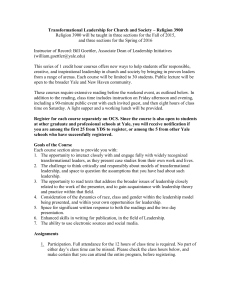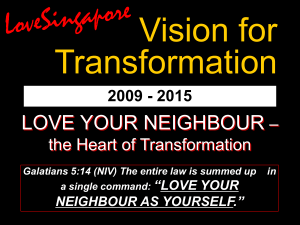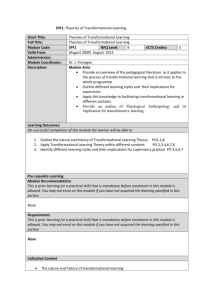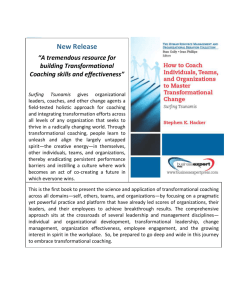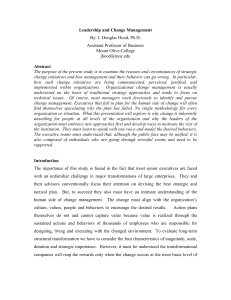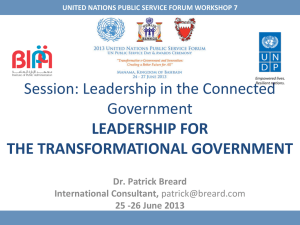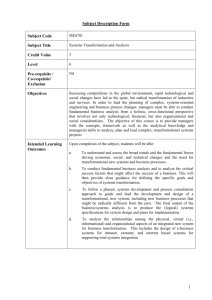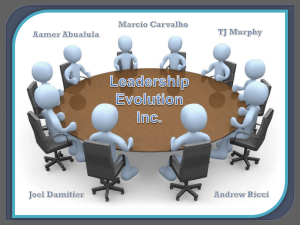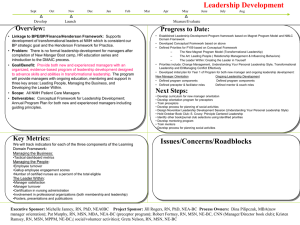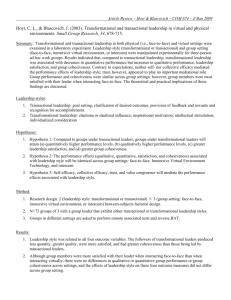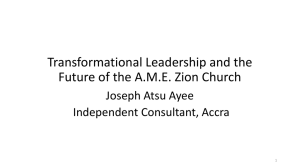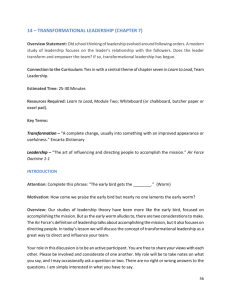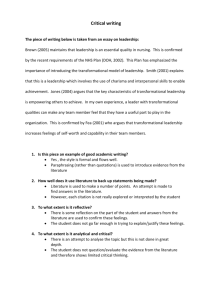IASN_ Leadership – Carynski
advertisement
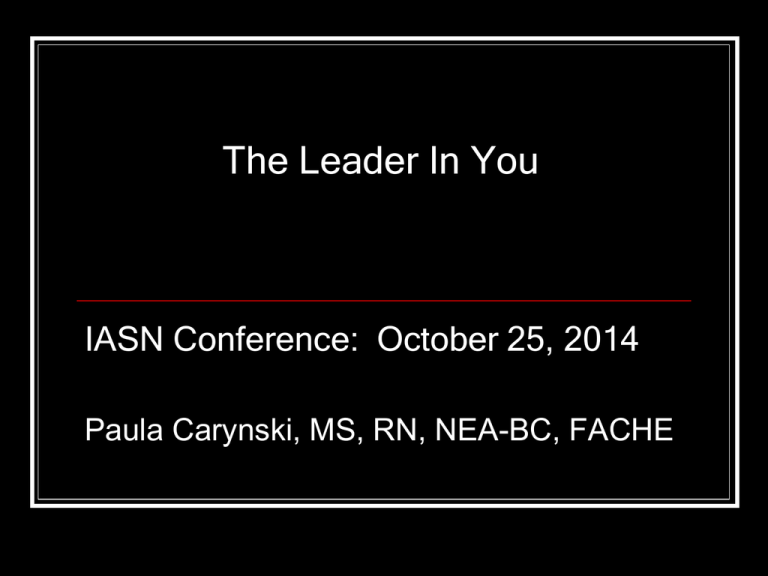
The Leader In You IASN Conference: October 25, 2014 Paula Carynski, MS, RN, NEA-BC, FACHE Disclosure Statements • The planners and speaker have declared no conflict of interest • There is no sponsorship for this program • Criteria for successful completion includes attendance at the entire event and submission of a completed evaluation form OSF SM HEALTHCARE System Objectives • Define the two categories of leadership and differences between the two. • Discuss seven principles for leadership success. • Share my personal leadership journey. OSF SM HEALTHCARE System Transformational Leadership James MacGregor Burns first introduced transformational leadership in 1978 but not for healthcare at the time, it was for political leadership 4 Transformational Leadership “two or more persons engage with others in such a way that the leader and followers raise one another to high levels of motivation and morality.” James MacGregor Burns, 1978 Transformational Leadership: Belief that transformational leaders are facilitators of change and move the process through the organization Create a sense of possibility and vision for the future of the organization Have a desire for common goals, not “me” but “us” 6 DEFINITIONS CONTINUED… Transformational leaders have the ability to clearly articulate a vision of the future… They are the myth-makers, the storytellers They capture our imagination with the vivid descriptions of the wonderful future we will build together (Trofino, 1992) Transactional Burns described and compared two conflicting leadership styles First: Transactional leadership Example: “If you help me THEN I will help you” 8 Transactional continued If it benefits “me” and I get somewhere in life then “fine.” If it does not go well, the relationship can end at any point. No loyalty or support involved by either individual. 9 How Common Is Transformational Leadership Transformational leadership is often seen in various situations such as: Parents motivating their children A teacher motivating a student or students A manager motivating their staff 10 What It Looks Like Four Elements: 1. 2. 3. 4. Idealized influence (charisma) Inspirational motivation (creating meaning of work) Intellectual stimulation (creative problem solving) Individual consideration (listening, praising) Seven Principles for Leadership Success 1. 2. 3. 4. 5. 6. 7. Love what you do at every step. People are the most important part of your journey. Attitude can be more valuable than IQ or experience. Dressing for the position helps Communicate often and simply. Healthcare is a business that’s very personal. Be true to who you are. Principle #1: Love what you do: Tell me what is it you plan to do with your one wild and precious life ? ~ Mary Oliver Principle #2: People are the most important part of your journey. Investing In Staff AS YOU GET OLDER, DON’T SLOW DOWN. SPEED UP. THERE’S LESS TIME LEFT. -Malcolm Forbes Principle #2: Investing In Each Other WHAT PEOPLE SAY YOU CANNOT DO, YOU TRY AND FIND THAT YOU CAN. -Hendry David Thoreau Chinese Proverb If you want one year of prosperity, grow grain If you want ten years of prosperity, grow trees If you want one hundred years of prosperity, grow people Principle # 3: Attitude can be more valuable than IQ or experience: Believing It Was Achievable and That We Were The Right People To Do It: YOU REALLY CAN CHANGE THE WORLD IF YOU CARE ENOUGH. -Marian Wright Edelman Video clip Principle # 4: Dressing for the position helps Principle # 5: Communicate often and simply Your Body Language Shapes Who You Are Principle #6: Healthcare is a business that’s very personal. THERE ARE MANY THINGS IN LIFE THAT WILL CATCH YOUR EYE, BUT ONLY A FEW WILL CATCH YOUR HEART. PURSUE THESE. -Michael Nolan Linking Everything We Do To The Peolple We Serve Principle #7: Be true to who you are When people see the respect and dignity we have for one another, they will know this is a good place. Summary As a leader…..know the people you serve Work to bring out the best in each individual Value input and allow them to grow Creating a healthy work environment This is the foundation of a transformational leader! Questions





